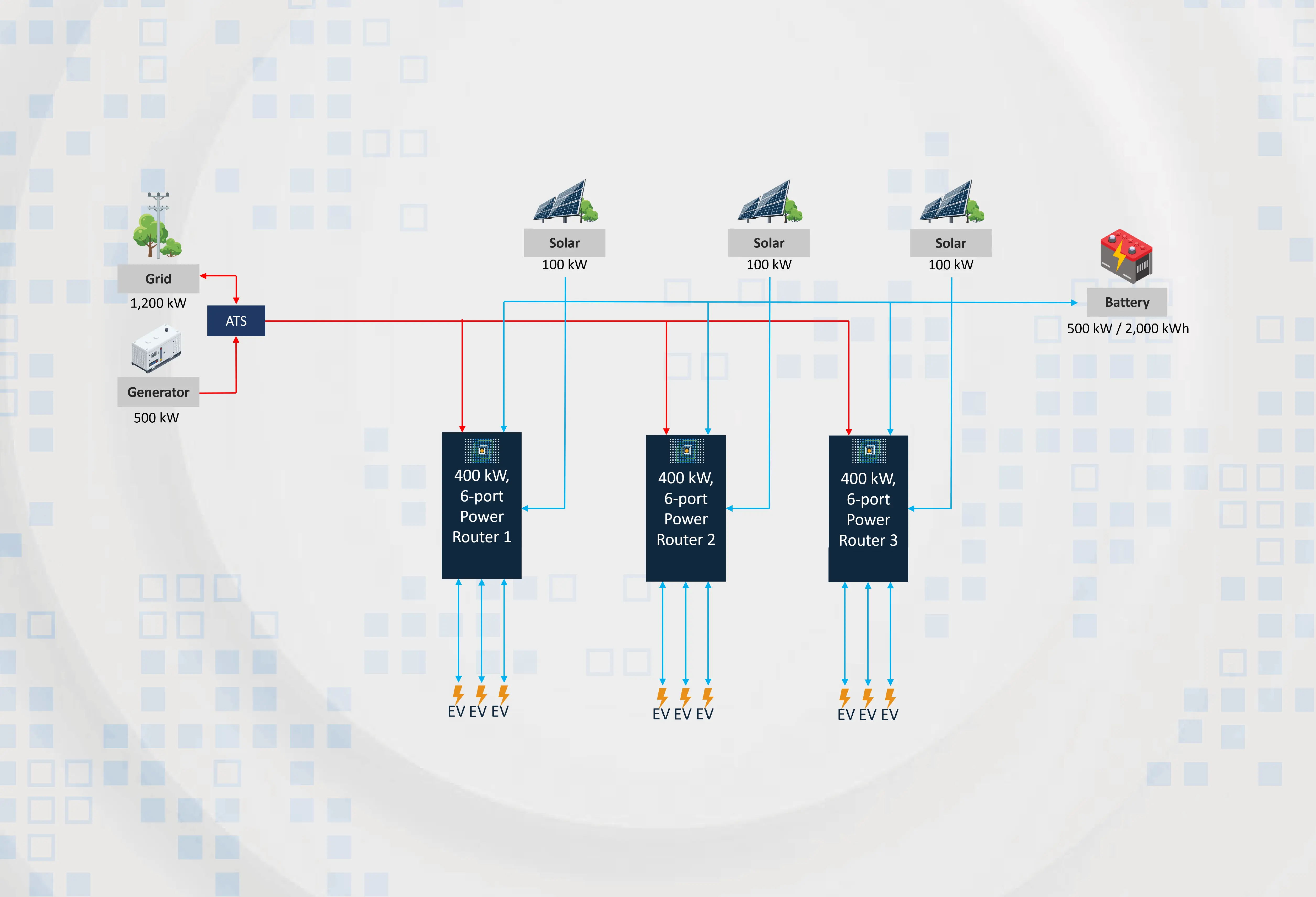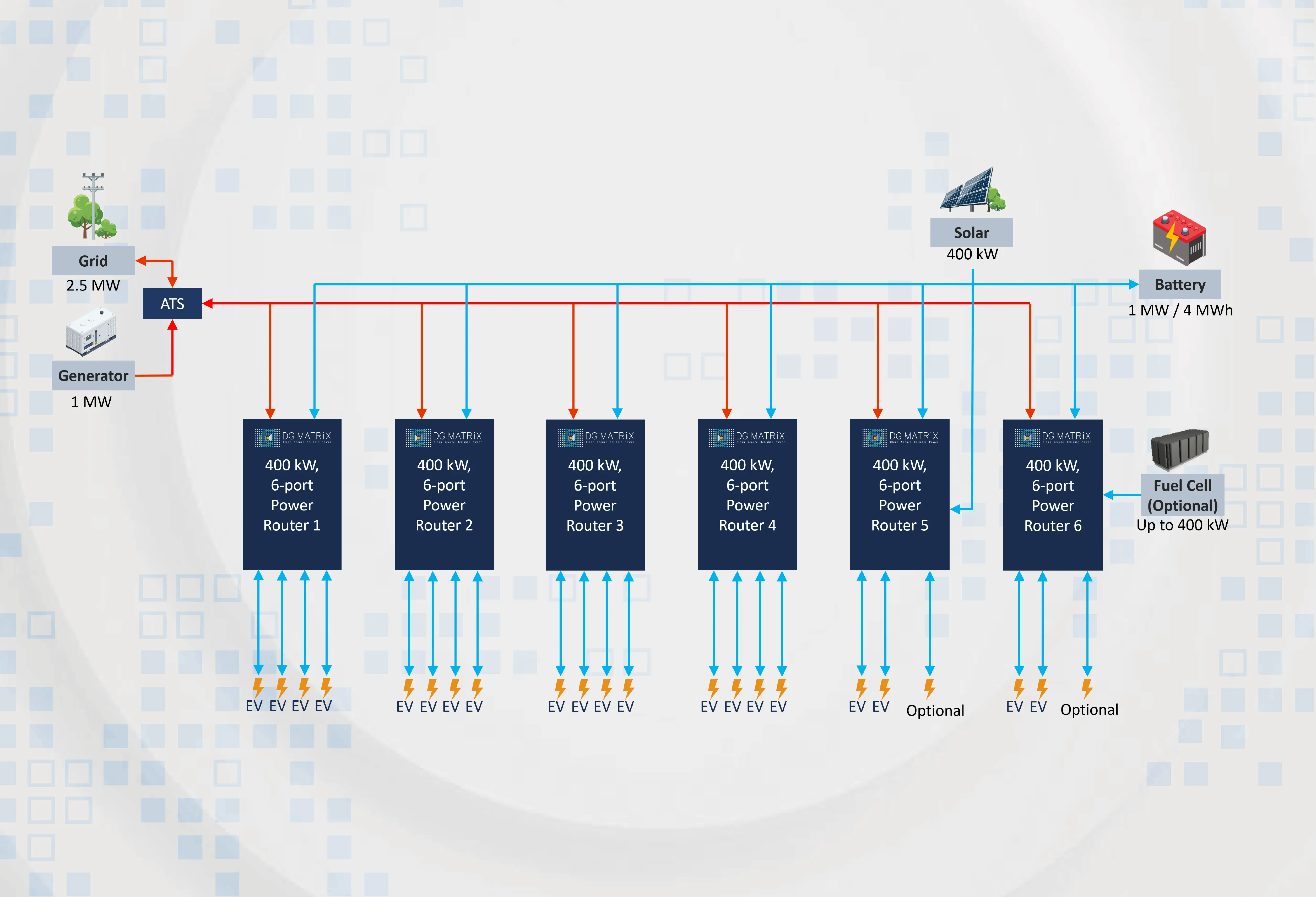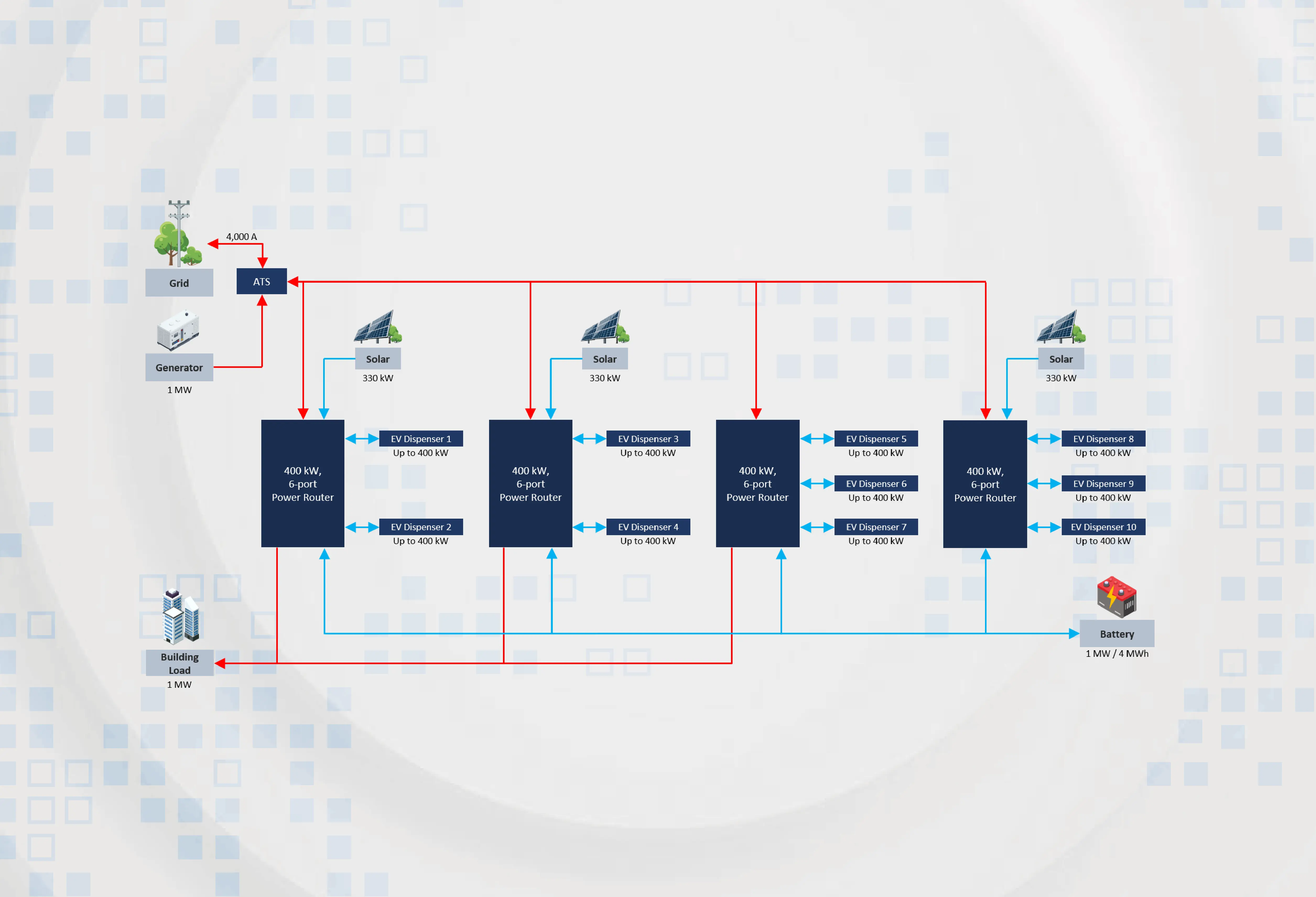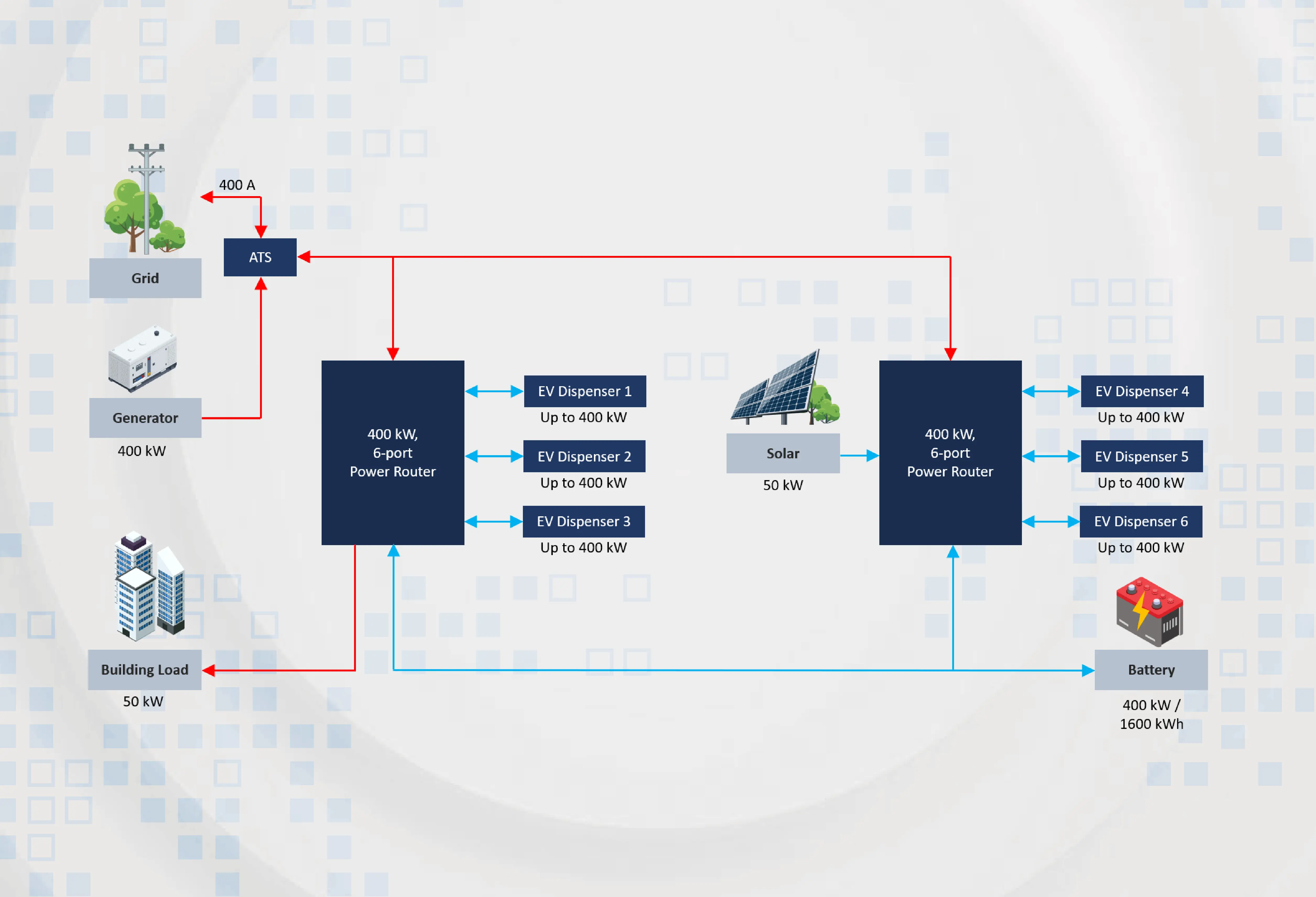Enhancing Charging Efficiency for School Bus Depots Jun 11, 2025
Executive Summary A school district seeks to establish an efficient and cost-effective charging infrastructure to support a fleet of 40 electric school buses. Given the long dwell times available for overnight charging, the focus is on minimizing dependence on grid upgrades, reducing operational costs, and ensuring seamless energy management. DG Matrix has developed a tailored solution utilizing its Power Router technology to optimize energy distribution, lower costs, and enhance sustainability. Challenges 1 The transition to electric school buses presents several key challenges: Extended Charging Windows, Lower Power Requirements: Unlike public fast chargers, school bus depots require slower charging solutions that efficiently utilize overnight energy availability. Energy Cost Management: Peak demand charges and fluctuating electricity rates necessitate a strategic approach to energy consumption.
Grid Reliability and Resiliency: Ensuring uninterrupted charging without overloading the local grid. Scalability: Future expansion may require additional chargers and integration with renewable energy sources. Sustainability Goals: Compliance with environmental regulations and sustainability commitments by incorporating green energy solutions. Requirements and Priorities To address these challenges, the school district prioritizes the following: Cost Efficiency: Minimize both capital (CapEx) and operational expenditures (OpEx) 1 while ensuring profitability. Resiliency: Ensure uninterrupted power supply for critical operations, even during grid outages. Sustainability: Maximize renewable energy usage and reduce carbon emissions. Scalability: Future-proof the facility for seamless integration of additional solar panels, battery storage, EV chargers, and other energy sources. Operational Simplicity: Implement a centralized energy management platform for efficient operation and monitoring.

Electrification

Accelerating Fleet Electrification for a Major Fleet Operator
Executive Summary A major fleet operator managing a nationwide logistics network faces significant challenges in electrifying its fleet due to high-peak demand charges, grid limitations, and the need for scalable energy solution ...

Streamlining Energy Management for a Major Supercenter
Executive Summary A leading national supercenter chain operating over 1,000 locations decided to deploy distributed energy, energy storage, and EV charging to further their corporate sustainability goals and to mitigate key cha ...

Modernizing Energy Management for a Major Gas Station Chain
Executive Summary A leading national gas station chain operating over 800 locations commited to deploy EV charging across all locations though quickly ran into significant cost and utility constraints, including multi-year permi ...
